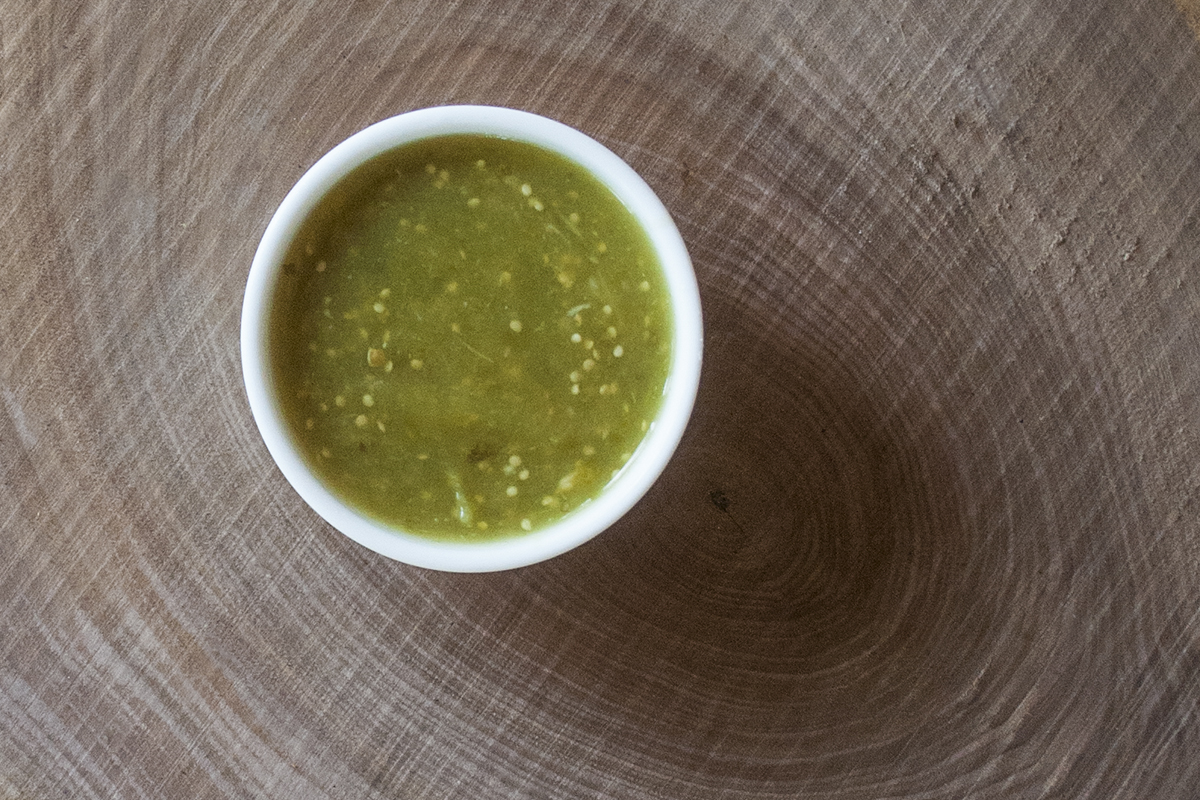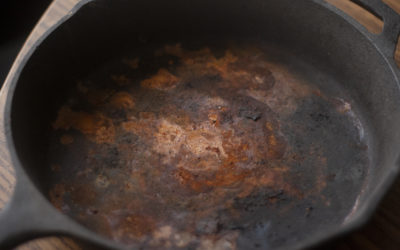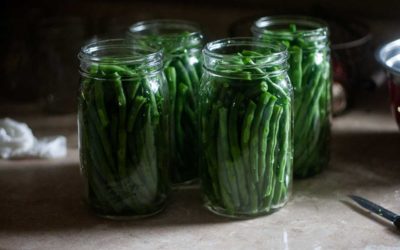Salsa Verde
verde and versatileWe had never grown a tomatillo a day in our life. To be honest, I’d never even cooked with them. Why we even planted them in the first place is beyond me and probably should’ve been included in our First Year Garden Fails post.
I googled canning recipes endlessly looking for every way to preserve what we had produced, but always seemed to circle back to Salsa Verde. I thought, great – we’re going to have three cans of green beans and 50 jars of salsa – practical. I was wrong, it all worked out in the end.


Below is a small batch recipe if you’re looking to make some on the fly and impress your friends and family, otherwise when your garden flourishes with a million tomatillos you can fall back on the larger quantity canning recipe.
SALSA VERDE RECIPE
SMALL BATCH
- 1 lb tomatillos
- 3 cloves garlic
- 1 small-medium sweet onion
- 1 poblano & 1 jalapeno pepper
- 3 tablespoons lime juice
- Handful cilantro
- 1 teaspoon salt
- Dash of cumin
LARGE QUANTITY CANNING
- 4lb tomatillos
- 6 cloves garlic
- 1 large sweet onion
- 2 poblano, 2 jalapeno 1 serrano
- Juice of three limes or quarter cup
- ¼ Cup cilantro
- 1 tsp salt
- 1 teaspoon cumin
INSTRUCTIONS
Preheat oven to 425 degrees. Cut tomatillos in half, placing the cut side down on a lined baking sheet along with your unpeeled garlic cloves and roast for 15-20 minutes. I also cut my onion in half or quarters and placed my peppers on a baking sheet to roast 15-20 minutes. Peel the outer skin off, cutting out the stem and remove majority of seeds from the peppers (remember this is where your heat is so the more you leave, the more spice you’re adding).
Toss roasted tomatillos, peeled garlic, onion, peppers, salt, cumin, lime and cilantro into food processor and blend smooth. Depending on how much you’re making, you may need to do this in two batches.
Pour into saucepan and bring it to a simmer. Ladle hot salsa into hot jars, leaving ½ headspace. Remove air bubbles and wipe jar rim clean, placing center lid on jar. Apply band and adjust to fingertip-tight. Place jars in boiling water canner. Process jars for 20 minutes, turn off heat, remove lid and let jars stand 5 minutes. Remove and allow jars to cool completely.
Alternatively, you can pour it directly in a bowl and enjoy, or place in jars and refrigerate for up to two weeks.
We obviously eat Salsa Verde more now than ever, but the homemade version is so dang good – and I had no idea how versatile it was. We keep it on hand for the occasional chips and salsa snack and as our favorite taco Tuesday topping but here are a couple of our favorite recipes that use salsa verde too:
Salsa Verde Chicken Stuffed Poblano Peppers – Half Baked Harvest
White Chicken Chili – Gimme Some Oven
And Rich’s Green Chili, but has yet to share his secrets.

Recently Published
How To Remove Rust From Cast Iron
I broke the holy grail of cast iron sins and let my pan rust! See how I remove minimal surface rust from cast iron for when those water + cast iron accidents happen.
Water Glassing Egg Preservation
Looking to preserve your eggs for use thorughout the winter season? Water Glassing Eggs will keep your fresh eggs for up to 1 year!
Canning Green Beans using the Cold Pack Method
Green beans are one of the most consumed vegges here at the Henstooth Homestead and we prefer canning green beans using the cold pack method. Learn how today!



